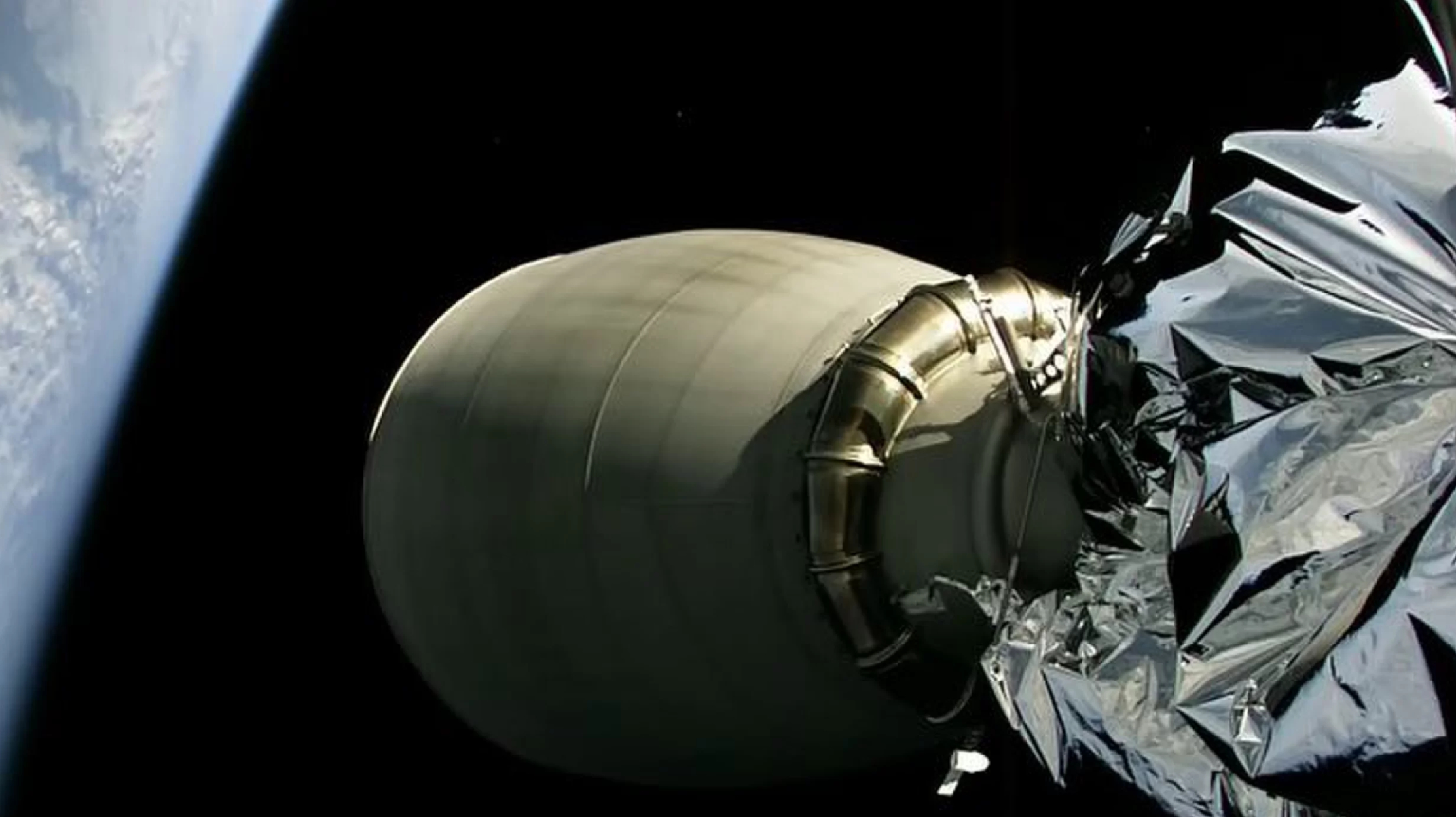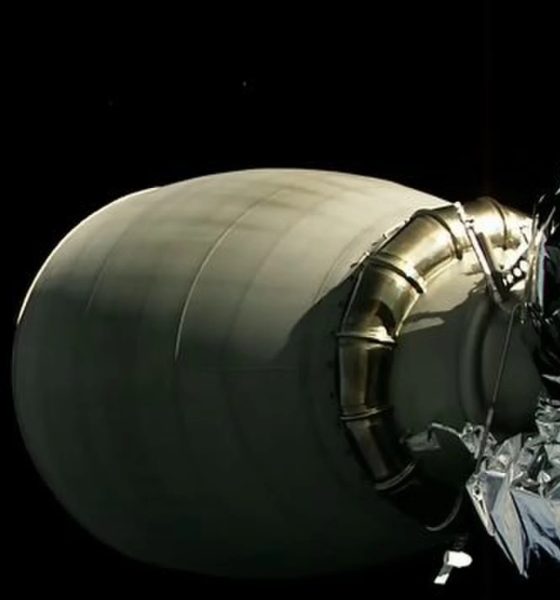

News
SpaceX will attempt Falcon 9 upper stage landings in 2018, says Shotwell
SpaceX also hopes to create an Internet constellation around Mars
In a candid and light-hearted presentation given at the Massachusetts Institute of Technology, SpaceX President Gwynne Shotwell revealed a considerable amount of exciting information about the space launch company’s future prospects and near-term goals.
Fascinatingly, Shotwell confirmed that SpaceX is currently attempting to procure nuclear materials in order to conduct research and development of nuclear propulsion for spacecraft. Nuclear-powered methods of propulsion have the potential to drastically increase the efficiency of spacecraft once in orbit, with the primary benefit being faster travel times around the Solar System. Faster transit times for manned spacecraft would translate into fewer consumables needed for those journeys, increasing the amount of other supplies that could be brought in a single trip. Beyond the orbit of Mars, other destinations humans might like to visit will require non-chemical propulsion, with more traditional rocketry leading to one-way voyages measured in years.
https://twitter.com/charlottelowey/status/913145922976190464
Equally exciting, she stated that SpaceX plans to attempt the first soft landing of Falcon 9’s upper stage before the end of 2018. Second stage recovery efforts would proceed much like Falcon 9’s first stage recovery did, beginning with attempts to land softly in the ocean and later bring in a droneship to attempt legitimate recoveries of the vehicle. While SpaceX’s now highly successful program of first stage recovery has taken the first steps to appreciably lower the cost of access to orbit, as much as 30% or more of the cost of every Falcon 9 launch can be found in the second stage and its many components, all of which are currently discarded every launch. Second stage recovery and reuse is nevertheless absolutely crucial to SpaceX’s and Elon Musk’s goal of reducing launch costs by anywhere from a factor of 10 to 100.
Still, the payload fairing – a major component of the Falcon 9 – costs approximately $5 million on its own, nearly 10% of the cost of a $62 million expendable launch. SpaceX has been making concerted progress towards fairing recovery and reuse, and Musk has said that he expects SpaceX to accomplish the first successful fairing recoveries before the end of 2017. The second stage is thus the obvious next step if the goal is to create a fully-reusable Falcon 9. SpaceX, however, seem to be prioritizing a different path.
Long road to reusabity of Falcon 9 primary boost stage…When upper stage & fairing also reusable, costs will drop by a factor >100. pic.twitter.com/WyTAQ3T9EP
— Elon Musk (@elonmusk) September 14, 2017
Shotwell clarified that SpaceX would not attempt to reuse Falcon 9’s upper stage, even if recovery efforts succeed. This suggests that SpaceX is planning to focus the majority of its research and development staff and capital on their considerably larger “BFR (Big Falcon Rocket) planetary colonizer” vehicle, which will be unveiled for the first time later today. Hence, Shotwell’s comment lends confidence to the belief that Falcon 9 will never become fully reusable, which makes sense. The decision to focus energy on a new launch vehicle is arguably a more efficient and productive task than modifying Falcon 9 even more drastically. The development of an entirely new rocket offers SpaceX the freedom to design for complete reusability from the start, whereas Falcon 9’s path to partial reusability has been inevitably circuitous.
Finally, Shotwell briefly discussed SpaceX’s desire to create a vast constellation of Internet satellites around Earth, stating that their goal was “make scads of cash, spend it going to Mars, [and] give Mars broadband too!”. This aligns with speculation and leaked financial documents. Just yesterday, the Federal Communications Commission (FCC) held an Open Commission meeting where they voted to hand off certain aspects of regulatory approval to the International Telecommunications Union, which is a relatively positive development for SpaceX’s satellite constellation.
https://twitter.com/charlottelowey/status/913146863842414593
Regardless, Musk is bound to reveal some even more thrilling details about SpaceX in his presentation at the 2017 International Astronautical Congress. Currently scheduled for 4 a.m UTC on September 29, or 9:30 p.m. PDT on September 28, and an official SpaceX.com livestream is expected to be provided for those who were unable to make the long journey to Adelaide, Australia.

Elon Musk
Starlink achieves major milestones in 2025 progress report
Starlink wrapped up 2025 with impressive growth, adding more than 4.6 million new active customers and expanding service to 35 additional countries, territories, and markets.

Starlink wrapped up 2025 with impressive growth, adding more than 4.6 million new active customers and expanding service to 35 additional countries, territories, and markets. The company also completed deployment of its first-generation Direct to Cell constellation, launching over 650 satellites in just 18 months to enable cellular connectivity.
SpaceX highlighted Starlink’s impressive 2025 progress in an extensive report.
Key achievements from Starlink’s 2025 Progress
Starlink connected over 4.6 million new customers with high-speed internet while bringing service to 35 more regions worldwide in 2025. Starlink is now connecting 9.2 million people worldwide. The service achieved this just weeks after hitting its 8 million customer milestone.
Starlink is now available in 155 markets, including areas that are unreachable by traditional ISPs. As per SpaceX, Starlink has also provided over 21 million airline passengers and 20 million cruise passengers with reliable high-speed internet connectivity during their travels.
Starlink Direct to Cell
Starlink’s Direct to Cell constellation, more than 650 satellites strong, has already connected over 12 million people at least once, marking a breakthrough in global mobile coverage.
Starlink Direct to Cell is currently rolled out to 22 countries and 6 continents, with over 6 million monthly customers. Starlink Direct to Cell also has 27 MNO partners to date.
“This year, SpaceX completed deployment of the first generation of the Starlink Direct to Cell constellation, with more than 650 satellites launched to low-Earth orbit in just 18 months. Starlink Direct to Cell has connected more than 12 million people, and counting, at least once, providing life-saving connectivity when people need it most,” SpaceX wrote.
News
Tesla Giga Nevada celebrates production of 6 millionth drive unit
To celebrate the milestone, the Giga Nevada team gathered for a celebratory group photo.

Tesla’s Giga Nevada has reached an impressive milestone, producing its 6 millionth drive unit as 2925 came to a close.
To celebrate the milestone, the Giga Nevada team gathered for a celebratory group photo.
6 million drive units
The achievement was shared by the official Tesla Manufacturing account on social media platform X. “Congratulations to the Giga Nevada team for producing their 6 millionth Drive Unit!” Tesla wrote.
The photo showed numerous factory workers assembled on the production floor, proudly holding golden balloons that spelled out “6000000″ in front of drive unit assembly stations. Elon Musk gave credit to the Giga Nevada team, writing, “Congrats on 6M drive units!” in a post on X.
Giga Nevada’s essential role
Giga Nevada produces drive units, battery packs, and energy products. The facility has been a cornerstone of Tesla’s scaling since opening, and it was the crucial facility that ultimately enabled Tesla to ramp the Model 3 and Model Y. Even today, it serves as Tesla’s core hub for battery and drivetrain components for vehicles that are produced in the United States.
Giga Nevada is expected to support Tesla’s ambitious 2026 targets, including the launch of vehicles like the Tesla Semi and the Cybercab. Tesla will have a very busy 2026, and based on Giga Nevada’s activities so far, it appears that the facility will be equally busy as well.
News
Tesla Supercharger network delivers record 6.7 TWh in 2025
The network now exceeds 75,000 stalls globally, and it supports even non-Tesla vehicles across several key markets.

Tesla’s Supercharger Network had its biggest year ever in 2025, delivering a record 6.7 TWh of electricity to vehicles worldwide.
To celebrate its busy year, the official @TeslaCharging account shared an infographic showing the Supercharger Network’s growth from near-zero in 2012 to this year’s impressive milestone.
Record 6.7 TWh delivered in 2025
The bar chart shows steady Supercharger energy delivery increases since 2012. Based on the graphic, the Supercharger Network started small in the mid-2010s and accelerated sharply after 2019, when the Model 3 was going mainstream.
Each year from 2020 onward showed significantly more energy delivery, with 2025’s four quarters combining for the highest total yet at 6.7 TWh.
This energy powered millions of charging sessions across Tesla’s growing fleet of vehicles worldwide. The network now exceeds 75,000 stalls globally, and it supports even non-Tesla vehicles across several key markets. This makes the Supercharger Network loved not just by Tesla owners but EV drivers as a whole.
Resilience after Supercharger team changes
2025’s record energy delivery comes despite earlier 2024 layoffs on the Supercharger team, which sparked concerns about the system’s expansion pace. Max de Zegher, Tesla Director of Charging North America, also highlighted that “Outside China, Superchargers delivered more energy than all other fast chargers combined.”
Longtime Tesla owner and FSD tester Whole Mars Catalog noted the achievement as proof of continued momentum post-layoffs. At the time of the Supercharger team’s layoffs in 2024, numerous critics were claiming that Elon Musk was halting the network’s expansion altogether, and that the team only remained because the adults in the room convinced the juvenile CEO to relent.
Such a scenario, at least based on the graphic posted by the Tesla Charging team on X, seems highly implausible.








